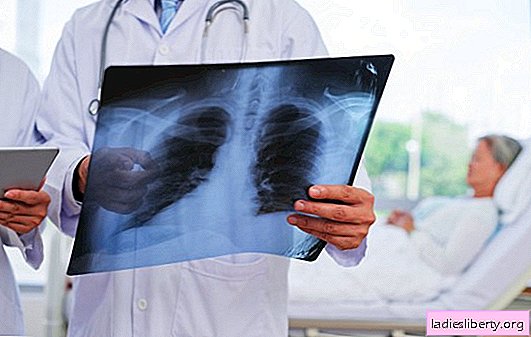
An alarming trend emerged at the beginning of the 20th century: more and more women develop lung cancer. In the past, men were more likely to have lung cancer than women. Recent studies show that the situation has reversed.
At what age do women often get cancer?
Cancer Society scientists have found in a current study that more women are suffering from lung cancer. Cancer of the lungs affects even more women than men. Doctors published the results of the study in the English-language journal New England Journal of Medicine.
The good news is that fewer people between the ages of 30 and 60 have lung cancer. The reason for this is probably clear: fewer people smoke. According to experts, more than 25% of cancer deaths in the United States are caused by smoking. Therefore, if people want to take care of their health and avoid cancer, they should quit smoking.
Men have been diagnosed with lung cancer for decades more often than women. A study of women of the so-called generation X (born in the 60s and 70s) showed that this trend has changed.
Since men smoked cigarettes more often than women in earlier generations, the former had a higher level of lung cancer. According to doctors, women aged 30 to 49 are more likely to have lung cancer.
Special cigarettes have led to an increase in the number of women smokers
Given the fact that cigarette manufacturers are increasingly selling cigarette brands to women, the result is not surprising. The first cigarette designed specifically for women, Virginia Slims, was launched in 1968. At that time, the advertising campaign was aimed at linking cigarette smoking with the women's liberation movement.
Smoking behavior has changed over time, and more and more women have adopted an unhealthy habit. However, women still smoked slightly less than men. Smoking levels among women and girls rose sharply in the 1990s, certainly due to the commercialization of tobacco companies.
Which women are especially at risk?
Between 1995 and 1999, the incidence of lung cancer was 26% lower in women aged 44 to 49 years. But between 2010 and 2014, the incidence of lung cancer was 8% higher than that of men.
Researchers added that a higher incidence of lung cancer in women applies not only to Hispanic or Caucasian women. Asians and blacks also often suffer from malignant neoplasms.
There are three hypotheses that explain the increase in lung cancer cases.
Since women still smoke slightly less than men, scientists believe that another factor can play an important role. There are three hypotheses that increase the risk of cancer in women.
Some studies show that women who smoke are less likely to quit smoking than men. Over time, the risk of developing lung cancer decreases when people quit smoking. The risk of developing adenocarcinoma increases for a longer period of time after smoking cessation. The risk of lung cancer is reduced by 25% only in the first five years after smoking cessation. After 10 years, the risk is reduced by 50%. If people quit smoking for 20 years or more, the risk will even decrease by 90%.
It is also possible that women are more susceptible to the negative health effects of smoking. The advent of so-called “light cigarettes” has changed smoking behavior, so the risk of developing cancer has increased.
Researchers explain that about 2-3 decades ago, smokers had a 10-fold higher risk of developing cancer compared to non-smokers. However, about 10% of men and 15% of women with lung cancer have never smoked. Therefore, it is also possible that some people are more susceptible to lung cancer.
Researchers emphasize that people should give up smoking in the interests of their health. The sooner smokers quit smoking, the better. If a person refuses to smoke at the age of 30, he will be able to get an average of about 10 additional years of life.
Regardless of age, it is always wise to quit smoking. However, it’s best if people don’t even start smoking, as experts explain.











